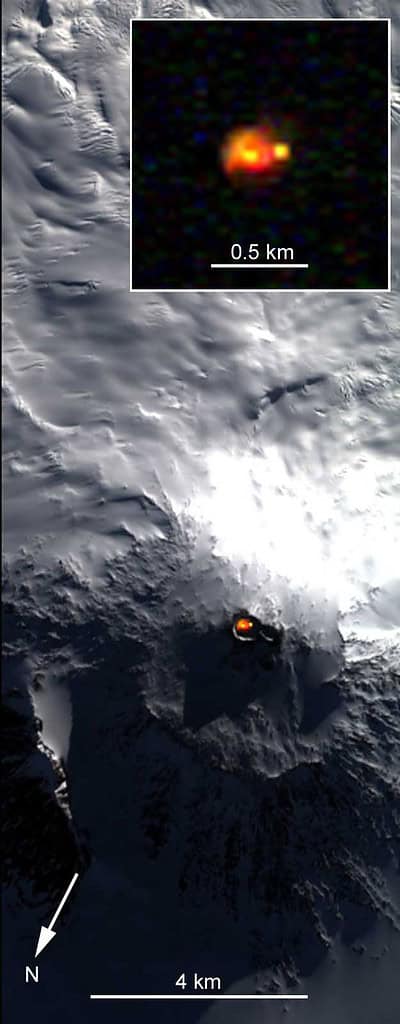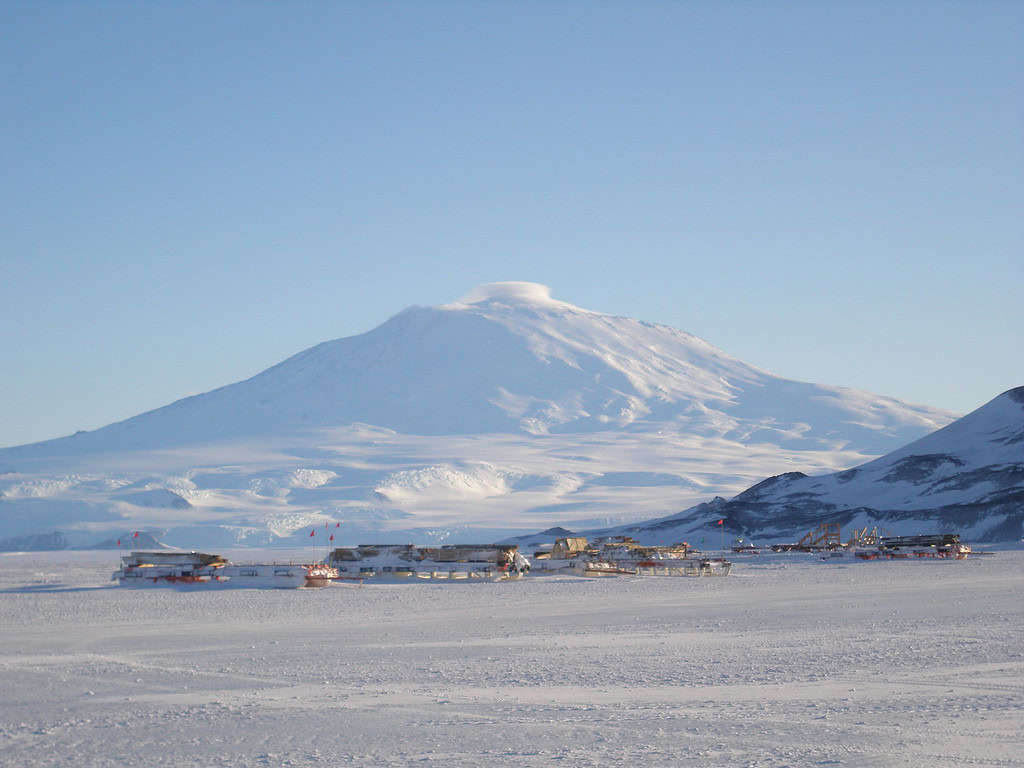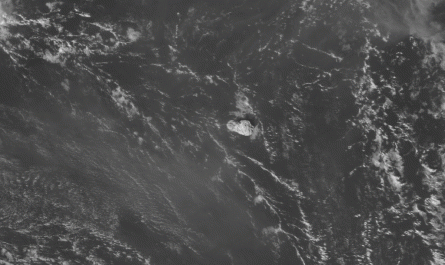Mount Erebus, a volcano nestled in the icy expanse of Antarctica, has been continuously erupting since at least 1972. It also has a lava lake sitting at its top. The volcano has pretty rare chemistry, pumping out an uncommon mix of minerals — including 80 grams of crystallized gold daily. That’s around $6,000 per day in gold at today’s prices. But that’s not even the coolest thing about Erebus.

The geology of darkness
Antarctica is known for its vast expanse of ice and snow. But it’s also a very active volcanic place. According to a recent study, the continent has at least 138 volcanoes, and Erebus is one of the most active.
Mount Erebus is a stratovolcano, formed from layers of lava flows and tephra — a mix of volcanic ash, pumice, and other debris. Its summit reaches an altitude of 3,794 meters (12,450 ft), making it the second-tallest volcano in Antarctica, after the dormant Mount Sidley. What sets Erebus apart is its persistent lava lake (one of only a handful on Earth), which resides within the main crater.


Mount Erebus’ activity is characterized by so-called “strombolian eruptions”. These are moderate bursts of explosive activity. Basically, the volcano regularly emits plumes of gas and steam and occasionally, propels bombs of molten lava high into the air.
In 1841, explorer James Clark Ross and his crew sailed past the island on which Erebus lies and found it erupting. The explorer named it (and its neighbor, Mount Terror) after his ships, HMS Erebus and HMS Terror. In Greek mythology, Erebus is the personification of darkness and one of the first creatures to exist, born out of chaos and the night.
The volcano was first surveyed in December 1912 by a science party from Robert Falcon Scott’s Terra Nova expedition. The surveyors noted the main characteristics of the volcano and collected geological samples — a remarkable achievement given how difficult the site is.


A strange type of magma
Despite its active status, Erebus’s eruptions are typically small and localized, posing minimal threat to researchers who brave the harsh conditions to study it up close. Nowadays, the largest Antarctic settlement (the McMurdo Station, operated by the US) stands close to the volcano. The station serves as a logistical hub for scientists studying Erebus and other Antarctic phenomena.
<!– Tag ID: zmescience_300x250_InContent_3
–>
During the summer months, McMurdo’s population increases to over 1,000 residents— mostly scientists and support staff from around the globe. The station provides essential support for volcanic studies, offering a base for both launching research expeditions and analyzing collected data. Researchers also have seismic sensors mounted around the volcano to monitor activity.


In 1992, the interior of Mount Erebus was explored by Dante I, a robotic explorer with eight legs designed for tethered descents. Dante was tasked with collecting gas samples from the magma lake within the inner crater using its onboard gas chromatograph, while also measuring the volcano’s internal temperature and the radioactivity of its materials.
Mount Erebus has a rare sort of eruption, primarily due to its phonolitic lava, which is unusual among Earth’s volcanoes. Phonolitic lava is a type of volcanic rock that forms from magma with a specific type of chemistry. It contains minerals like nepheline or leucite instead of the more common quartz.


Gold eruption
But it gets even more interesting. The gases from Mount Erebus contain particles and metals, including gold — and Erebus erupts these particles. Essentially, the volcano constantly releases small gold crystals ranging in size from 20 to 60 micrometers.
This is not a new finding. Researchers found out about the gold eruption in the early 1990s. But what this means is that, starting in 1972, the volcano has erupted around $110,000,000 of gold. However, you won’t find that gold in nice nuggets. Instead, it’s scattered in microparticles all around. Even if you could get close to it, it doesn’t really make economic sense to try and process the eruption materials. You’d spend more money than you’d make.
The gold also doesn’t neatly gather in one place. The presence of gold has been detected as far as 1000 km (621 miles) from the volcano. Although researchers note that other valuable materials like copper and sulfur are also released, it isn’t economically feasible to mine them.
It’s not the only volcano that erupts gold. A few others, including the White Volcano in New Zealand, have the same characteristics. While it’s not out of the question to mine some of those in the future, the cold, inaccessible Antarctic is just not worth it.
A window into the Earth
Erebus has been active for around 1.3 million years and is the southernmost active volcano on Earth. The fact that it erupts gold is a neat curiosity, but other things about it are way more interesting.
As one of the few volcanoes with an active and accessible lava lake, Erebus offers direct observations of magma dynamics, including convection and gas emissions. These observations can help scientists to understand the behavior of magma under the Earth’s surface, particularly in terms of how gases escape from magma and how this influences volcanic eruptions.
Erebus’s phonolitic lava composition is also significant because it is relatively rare, leading to a specific type of eruption. Studying this type of lava can help volcanologists predict and model eruptions of similar volcanoes worldwide.
This spills into biology as well. The heat from Erebus affects the surrounding ice and creates subglacial environments that can harbor extremophiles — creatures that thrive in extreme environments. Studying these organisms can expand our knowledge of life’s adaptability. This could potentially offer analogs for extraterrestrial life, especially on icy worlds with internal heat sources like Jupiter’s moon Europa.
Thanks for your feedback!


